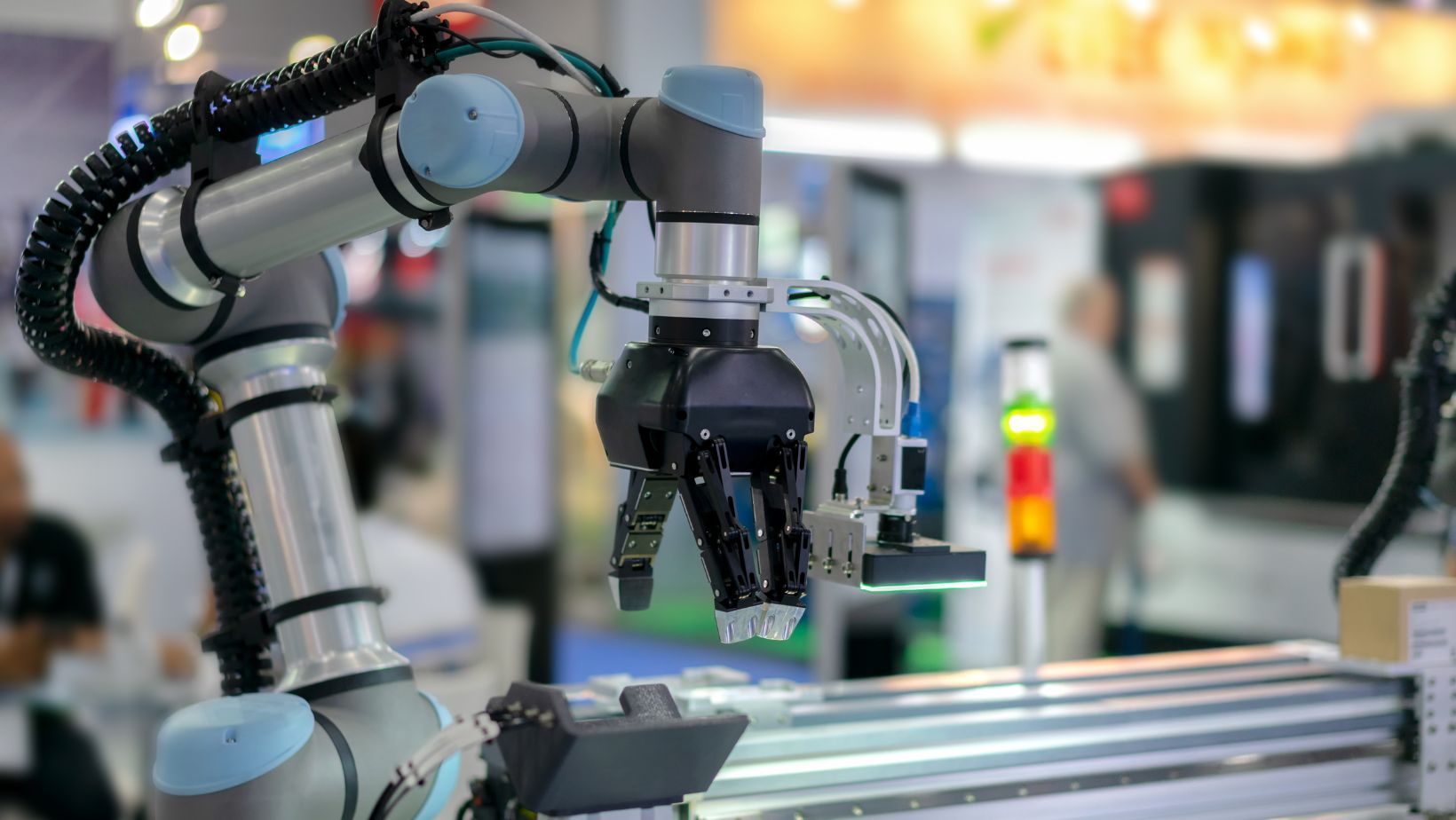Key Takeaways
- Revolutionizing Agriculture: Verdant Robotics integrates robotics and AI to transform crop management, enhancing efficiency and sustainability in farming practices.
- Automation and Precision: The company’s autonomous machines streamline tasks like planting, weeding, and harvesting, thereby increasing yields while reducing labor costs and chemical usage.
- Data-Driven Insights: Machine learning algorithms enable real-time data analysis, allowing farmers to make informed decisions that optimize resource allocation for irrigation, nutrients, and pest management.
- Environmental Benefits: By minimizing chemical inputs and conserving water, Verdant Robotics promotes ecologically sound farming practices that support soil health and biodiversity.
- Challenges to Adoption: Key barriers include technological complexities, interoperability with existing systems, and high initial investments, which may hinder widespread implementation among farmers.
In an era where technology meets agriculture, Verdant Robotics is revolutionizing the way farmers approach crop management. By harnessing the power of robotics and artificial intelligence, this innovative company is paving the way for more efficient and sustainable farming practices. With an emphasis on precision and productivity, Verdant Robotics empowers farmers to maximize their yields while minimizing their environmental impact.
As the global demand for food continues to rise, the need for advanced agricultural solutions becomes increasingly critical. Verdant Robotics stands at the forefront of this transformation, offering tools that not only enhance operational efficiency but also promote a healthier planet. This article explores the groundbreaking advancements and potential of Verdant Robotics, shedding light on how it’s shaping the future of agriculture.
Verdant Robotics
Verdant Robotics employs advanced technology to optimize crop management processes. The company specializes in robotic solutions powered by artificial intelligence, aiming to streamline agricultural tasks.
Verdant’s robotic systems include autonomous machines capable of performing a variety of functions, such as planting, weeding, and harvesting. These machines utilize sophisticated sensors and data analytics to make real-time decisions, contributing to increased operational efficiency.
Farmers using Verdant Robotics experience significant improvements in yield and reduced labor costs. The technology minimizes the need for chemical inputs through precision application, ultimately promoting sustainable farming practices.
In a market facing challenges like climate change and labor shortages, Verdant Robotics stands out as a pioneer. Their innovative strategies address these challenges while enhancing food production capabilities. Through continuous research and development, Verdant Robotics seeks to further enhance its offerings, solidifying its role in the future of agriculture.
Technology Behind Verdant Robotics

Verdant Robotics employs cutting-edge technology to revolutionize agricultural practices. It integrates automation and machine learning into its robotic systems, enhancing efficiency and sustainability in crop management.
Automation Features
Automation features in Verdant Robotics’ solutions significantly reduce manual labor requirements. Autonomous machines handle tasks like planting, weeding, and harvesting, allowing for precision execution. Equipped with advanced sensors, these machines collect data in real-time, ensuring decisions reflect current conditions. Automated systems perform tasks at optimal times, which maximizes yields and minimizes resource waste. Furthermore, the scalability of automation allows farms of various sizes to benefit from improved operational efficiency.
Machine Learning Integration
Machine learning integration enhances the decision-making capabilities of Verdant Robotics. Algorithms analyze vast amounts of data collected from crops and environmental factors, facilitating adaptive learning over time. This data-driven approach identifies patterns and predicts crop needs, enabling precise interventions tailored to specific situations. For instance, machine learning algorithms help optimize the timing and amount of water, nutrients, and pest management products used, thereby conserving resources and enhancing productivity. The continuous feedback loop fosters improvement in both technology and farming practices, contributing to progressive agricultural solutions.
Applications In Agriculture
Verdant Robotics employs its innovative technology across various agricultural applications, fundamentally transforming how farming practices are conducted. This section outlines key applications that enhance efficiency and sustainability in crop management.
Crop Monitoring
Crop monitoring involves the use of advanced sensors and imaging technology to gather data on plant health and growth. Verdant Robotics’ systems deploy drones and ground-based robotic units to collect high-resolution images of crops. These images are analyzed using AI algorithms to identify signs of stress, disease, and nutrient deficiencies. This real-time data enables farmers to make informed decisions about irrigation and fertilization, ultimately leading to optimized yields.
Weed Control
Weed control has significant implications for crop management efficiency. Verdant Robotics utilizes precision weeding technology that distinguishes between crops and weeds. Automated robots equipped with this technology can selectively target and eliminate weeds using minimal herbicide or mechanical means. This approach reduces chemical usage, lowering costs and environmental impact while increasing crop yield and health. By enhancing weed control mechanisms, farmers can focus resources on crop development, maximizing productivity.
Benefits Of Using Verdant Robotics
Verdant Robotics offers several significant advantages that enhance agricultural practices. These benefits, primarily focused on efficiency and environmental sustainability, contribute to improved outcomes for farmers and ecosystems alike.
Increased Efficiency
Increased efficiency stems from the automation capabilities of Verdant Robotics’ systems. Autonomous machines execute tasks such as planting, weeding, and harvesting with precision, minimizing human labor involvement. The integration of sophisticated sensors allows for accurate monitoring of crop conditions, enabling timely interventions. With real-time data analytics, farmers optimize resource allocation, thus maximizing productivity. This automation reduces operational costs and time required for manual tasks, allowing farmers to focus on strategic decision-making.
Environmental Impact
Environmental impact represents a critical advantage of adopting Verdant Robotics technology. By utilizing precision application techniques, these robots minimize the use of chemical inputs, such as fertilizers and herbicides. This targeted approach lessens the environmental footprint associated with conventional farming practices. Additionally, automated systems conserve water through efficient irrigation strategies, contributing to sustainable water use. Overall, the reduction of chemical reliance enhances soil health, promotes biodiversity, and supports ecological balance, aligning agricultural practices with environmental stewardship.
Challenges And Limitations

While Verdant Robotics contributes significantly to agricultural efficiency, certain challenges and limitations impact its widespread adoption.
Technological Barriers
Technological barriers exist within the realm of robotics in agriculture. Complexities in deploying robotic systems arise from the diverse conditions across farms. Variations in crops, terrains, and climates require advanced adaptability in robotic technology. Limited connectivity in rural areas may hinder real-time data transmission, affecting the effectiveness of AI-driven systems. Additionally, integration with existing farming equipment presents compatibility issues, requiring farmers to invest in new infrastructure or technology, which may disrupt established practices.
Cost Considerations
Cost considerations remain significant obstacles for adoption. Initial investment for robotic systems can be substantial, potentially reaching hundreds of thousands of dollars. Farmers, particularly those operating on smaller margins, might hesitate to allocate funds for advanced technology. Ongoing maintenance and operational costs add another layer of financial burden. Economic fluctuations and market uncertainties can also influence farmers’ willingness to invest in new systems. Balancing these costs with anticipated long-term savings and productivity gains proves essential for broader implementation.
Tech in Farming Practices
Verdant Robotics is paving the way for a new era in agriculture by seamlessly blending technology with farming practices. Its innovative approach not only boosts productivity but also champions environmental sustainability. As agricultural challenges continue to evolve, the potential for robotic solutions to address labor shortages and climate change becomes increasingly vital.
Farmers can look forward to enhanced decision-making and resource management through the precision offered by Verdant’s systems. While challenges remain in terms of adoption and integration, the long-term benefits of efficiency and sustainability are undeniable. Verdant Robotics is set to play a crucial role in shaping the future of farming, ensuring that agricultural practices can meet the demands of a growing population while nurturing the planet.

